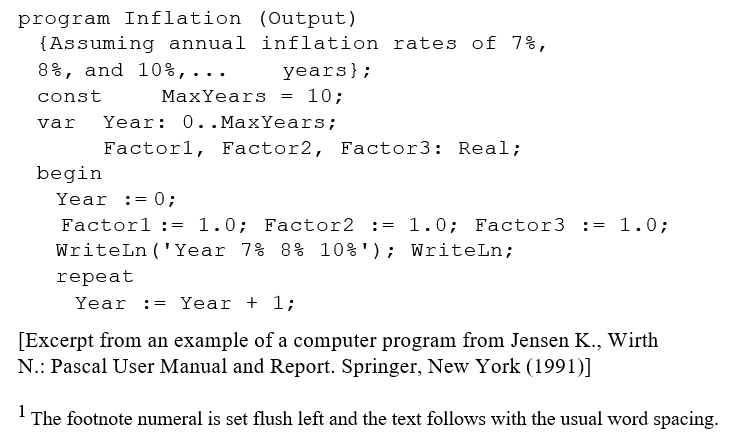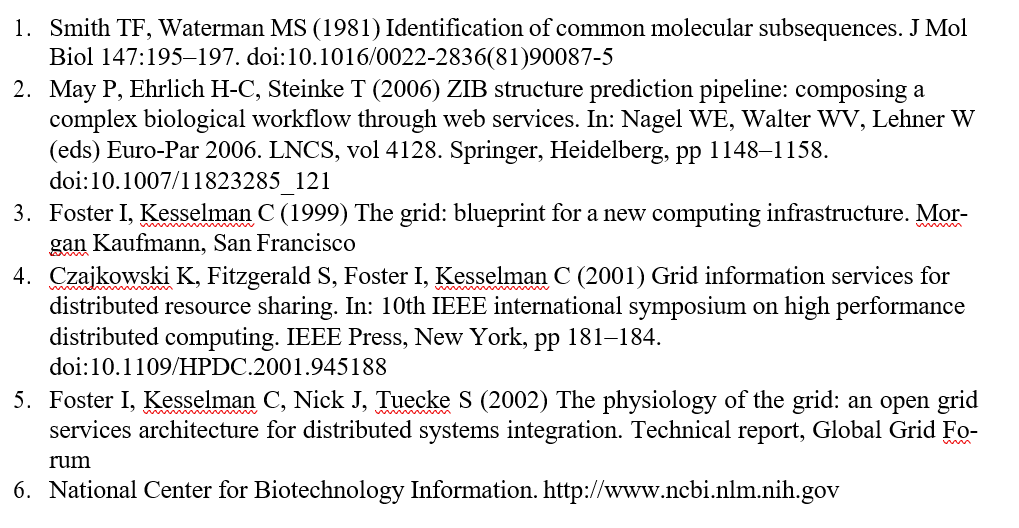All of the abstracts and papers must be submitted via BME9’s EasyChair system.
The abstract is within the limit of 300 words, and should be used as the template Abstract Template BME9
All accepted papers will be published in the conference proceedings, which will be published by Springer (approved) in the series of IFMBE Proceeding https://www.springer.com/series/7403 , indexed by SCOPUS and EI-Compendex.
Should you have any issues in submission, please contact us at: bme2022@hcmiu.edu.vn
Instruction to create a new EasyChair account
- To open the EasyChair Login Page for the BME9, go to BME9’s EasyChair
- Create a new account by clicking “create an account“
- Fill the Captcha and click “Continue”
- Fill required information and click “Continue”
- A confirmation message will be sent to the provided email. Click the embedded link to continue
- Complete the sign-up process by filling in the account information and clicking “Create my account”.
- Another confirmation email about the new account will be sent to the user’s email. Sign in with the user name and password you are provided at BME9’s EasyChair
- Click ‘New Submission’ to upload your abstract. The abstract template can be found here. Abstract Template BME9
The deadline to submit the abstract is Aug 1st, 2022
QUICK GUIDE FOR USING EASY CHAIR SYSTEM
How to submit your abstract?
- Login to BME9 submission page provided by EasyChair.
- Click on “New Submission” link on top of the screen.
- Select the track you want to submit your abstract, and click “Continue”.
- Submission form appears, fill in with your abstract and related information.
– You can fill “N/A” on the text box that is irrelevant to you (such as “Fax”).
– At least one author and two keywords are required.
– If your abstract is plain-text, fill in the abstract text box, and also click on “Abstract only” in the Paper upload
– If your abstract contains formulae that cannot be displayed as plain text (or you want it to be well-formatted, etc.), please write some note in the the Abstract (at least two lines), and upload your true abstract in the Paper upload box. - Click on “Submit Paper” button.
- Submitted abstract can be modified later by logging-in and clicking on “My submissions”. The menu on the right will assist you with submission modification.
How to submit your full-text paper
To upload your final paper, click on “Submission #” and select “Update file” from the right-hand menu of the Submission screen. After selecting the file that you wish to upload from your computer, submit your final paper by selecting the “Submit” button.
Instructions for Authors (Full-text Paper submission)
Springer Guidelines for Authors of Proceedings
Before you start: Checklist of Items to Be Sent to Your Conference Contact
- The final source files, bib/bbl files, images, etc. (no older source files)
- A final PDF file corresponding exactly to the final source
- A paper submission form -> IFMBE_copyrightform_BME9
- A permission request for reused materials (if necessary)
- The name and e-mail address of the contact author(s) who will check the proof of the
- The name and e-mail address of all corresponding authors
- A suggestion for an abbreviated running head, if
- Information about correct representation of authors’ names, where
1 Selection Criteria for Manuscripts
Any submitted manuscripts must meet these following requirements in order to be selected for reviewing:
- The manuscript must be written in English, with appropriate and academic lexical resources and correct grammar structures
- The manuscript should also include:
- a clear statement about the scope of the research,
- a detailed review of state-of-the-art or latest works,
- an obvious and careful description of utilized approaches or methods,
- results with main observations
- a good conclusion and discussion drawn from the observed Please refer to an example of previously published papers in the link below: https://preview.tinyurl.com/bme8-example-submission
2 Preparation of Your Paper
Your paper may be prepared in LaTeX or Microsoft Word. Sample papers in LaTeX and Microsoft Word format can be found at: . We recommend that authors should use word for the best compatibility. Inside the paper, authors should include statements about their conflict of interest, for example: “The authors have no conflict of interest to declare”. We need all source files (LaTeX files with all the associated style files, special fonts and eps files, or Word or rtf files) and the final pdfs of all of the papers. Please note that we cannot accept Frame maker files. References are to be supplied as Bbl files to avoid omission of data during conversion from Bib to Bbl. Our preferred bibliographic styles are MathPhySci (particularly for computer science) and Basic (please see the references at the end of this document for examples of these two styles).
The program chairs will be your main points of contact for the preparation of the volume.
2.1 Structuring Your Paper
Affiliations, Email-Addresses, and ORCIDs. The affiliated institutions, including town/city and country, are to be listed directly below the names of the authors. Multiple affiliations should be marked with superscript Arabic numbers, and they should each start on a new line. Including your postal code is optional. We encourage authors to include their ORCIDs in superscript next to their names (see Sect. 3.4 for details).
Please place an envelope icon (or any other pointer) next to the name of the corresponding author, whose email address is mandatory, in the header of the paper. Email addresses should start on a new line directly under the corresponding affiliation.
We strongly recommend that all authors should include at least their affiliation and email address in the submitted paper.
Headings. Headings should be capitalized with an initial capital letter for each word and should, with the exception of the title, be aligned to the left. Only the first two levels of section headings should be numbered, as shown in Table 1. The respective font sizes are also given in Table 1. Kindly refrain from using “0” when numbering your section headings.
Table 1. Font sizes of headings. Table captions should always be positioned above the tables.
| Heading level | Example | Font size and style |
| Title (centered) | Lecture Notes | 14 point, bold |
| 1st-level heading | 1 Introduction | 12 point, bold |
| 2nd-level heading | 2.1 Printing Area | 10 point, bold |
| 3rd-level heading | Run-in Heading in Bold. Text follows | 10 point, bold |
| 4th-level heading | Lowest Level Heading. Text follows | 10 point, italic |
Words joined by a hyphen are subject to a special rule. If the first word can stand alone, the second word should be capitalized.
Here are some examples of headings: “Criteria to Disprove Context-Freeness of Collage Languages”, “On Correcting the Intrusion of Tracing Non-deterministic Programs by Software”.
Lemmas, Propositions, and Theorems. The numbers accorded to lemmas, proposi- tions, and theorems, etc. should appear in consecutive order, starting with Lemma 1. Please do not include section counters in the numbering like “Theorem 1.1”.
2.2 Length of Papers
The most common types of papers accepted for publication are full papers (10–20+ pages) and short papers (6+ pages), where a page constitutes 300-400 words.
2.3 Fonts
We aim to publish all proceedings papers in full-text xml. Our xml templates for La- TeX are based on CMR, our xml templates for Word are based on Times. We ask you to use the font according to the template used for your papers. Papers using other fonts will be converted by our typesetters.
2.4 Page Numbering and Running Heads
There is no need to include page numbers or running heads; this will be done at our end. If your paper title is too long to serve as a running head, it will be shortened. Your suggestion as to how to shorten it would be most welcome.
2.5 Figures and Tables
It is essential that all illustrations are clear and legible. Vector graphics (rather than rasterized images) should be used for diagrams and schemas whenever possible. Please check that the lines in line drawings are not interrupted and have a constant width. Grids and details within the figures must be clearly legible and may not be written one on top of the other. Line drawings are to have a resolution of at least 800 dpi (preferably 1200 dpi). The lettering in figures should not use font sizes smaller than 6 pt (~ 2 mm character height). Figures are to be numbered and to have a caption which should always be positioned under the figures. Figures and Tables should be cross-referred in the text.
 Captions are set in 9-point type. If they are short, they are centered between the margins. Longer captions, covering more than one line, are justified.
Captions are set in 9-point type. If they are short, they are centered between the margins. Longer captions, covering more than one line, are justified.
If screenshots are necessary, please make sure that the essential content is clear to the reader.
Remark 1. In the printed volumes, illustrations are generally black and white.
2.6 Formulae
Displayed equations or formulae are centered and set on a separate line (with an extra line or half line space above and below). Equations should be numbered for reference. The numbers should be consecutive within the contribution, with numbers enclosed in parentheses and set on the right margin. Please do not include section counters in the numbering. If you are using Word, please use the Math function of Word 2007, Word 2010 or Word 2013, or MathType or the Microsoft Equation Editor with Word 2003, to create your equations, and insert the math objects in your Word document in an editable format through MathType or MsWord equation editors.
x + y = z (1)
Equations should be punctuated in the same way as ordinary text.
2.7 Footnotes
The superscript numeral used to refer to a footnote appears in the text either directly after the word to be discussed or – in relation to a phrase or a sentence – following the punctuation mark (comma, semicolon, or period).1
For remarks pertaining to the title or the authors’ names, in the header of a paper, symbols should be used instead of a number (see first page of this document). Please note that no footnotes may be included in the abstract.
2.8 Program Code
Program listings or program commands in the text are normally set in typewriter font:

2.9 Citations by Number
Arabic numbers are used for citation, which is sequential either by order of citation or by alphabetical order of the references, depending on which sequence is used in the list of references. The reference numbers are given in brackets and are not superscript. Please observe the following guidelines:
- Single citation: [9]
- Multiple citation: [4-6, 9]. The numbers should be listed in numerical
- Sequential citation by order of citation: reference 7 cannot be cited before reference 5, for
- If an author’s name is used in the text: Miller [9] was the first …
Please write all references using the Latin alphabet. If the title of the book you are referring to is, e.g., in Russian or Chinese, then please write (in Russian) or (in Chinese) at the end of the transcript or translation of the title. Do not include references to pieces of work that are not connected with your paper.
In order to permit cross-referencing within SpringerLink, and between different publishers and their online databases, Springer standardizes the format of the references according to the requirements for CrossRef (http://www.crossref.org/). The reference section is included in the metadata of the paper on SpringerLink, increasing the visibility of the referenced papers and facilitating research considerably.
We strongly encourage you to include DOIs (Digital Object Identifiers) in your references. The DOI is a unique code allotted by the publisher to each online paper or journal article. It provides a stable way of finding published papers and their metadata. The insertion of DOIs increases the overall length of the references section.
2.10 Ethics and Permissions
If figures, tables, animations or text quotations from copyrighted works (including websites) are included in your paper, permission must be obtained from the copyright holder and the author(s) for both the print and the online format. Please take a look at the following page for more details: http://www.springer.com/de/authors- editors/book-authors-editors/book-authors-helpdesk/rights-permissions-and- licensing/19392.
If plagiarism has been committed, the paper on SpringerLink is given a “retracted” stamp, and an erratum explaining the reasons for the retraction (i.e., plagiarism) is inserted. In addition, the volume editors and the author’s academic supervisors are informed. Please note that a retracted paper remains visible, with its “retracted” stamp. It does not simply disappear.
Please note that your paper may be checked by our plagiarism-checking tool on its arrival at Springer.
In case of involving human participation, it is essential that you have to announce or explain the ethical approval in your paper. You should state by which committee did you obtain the approval. A sample ethical approval announcement is as following: “All procedures performed in studies involving human participants were in accordance with the ethical standards of the institutional and/or national research committee of Your-Committee-Name with a reference number of 112230”
Kindly refer to the following page for guidelines on publishing ethics, conflict- of- interest statements, and more: https://www.springer.com/gp/authors-editors/journal- author/journal-author-helpdesk/before-you-start/before-you-start/1330#c14214.
2.11 Avoidance of Self-plagiarism
A certain overlap in scientific content between articles by the same author is standard practice and to be expected. However, it is essential that transparency is retained and appropriate references included. Permission must be obtained from other publishers, where appropriate.
3 Additional Information Required from Authors
3.1 Paper Submission Form
A Paper Submission Form with signed signatures from authors, or at least the signature of the corresponding author is required. Digital signatures are not acceptable.
3.2 Permission Request Form (optional)
If any material is reused from other previous publishers, the authors should obtain permissions from those publishers. Please refer to the link at http://www.copyright.com/publishers/rightslink-permissions for more information.
3.3 Contact Author Information
Kindly assure that, when you submit the final version of your paper, you also provide the name and e-mail address of the contact author for your paper. These details are used to compile a list of contact authors for our typesetting partners. The contact author must be available to check the paper before it is published.
3.4 Correct Representation of Author Names
Authors’ names should be written out in full in the header of the paper. They are shortened by us to “initials surname” in the running heads and take the form “surname, given name” in the author index. If you or any of your co-authors have more than one family name, it should be made quite clear how your name is to be displayed in the running heads and the author index. All authors should write their given names in front of their surnames at the tops of their papers. If you only have one (main) name, please make sure that this name is written out in full in the running heads, when you check your final PDF. Names and affiliations cannot be changed once a paper has been published. Also, if you have more than one paper in the volume, please check that your name has been written consistently throughout.
3.5 ORCID Identifier
Springer is the first publisher to implement the ORCID identifier for proceedings, ultimately providing authors with a digital identifier that distinguishes them from every other researcher.
Please see https://goo.gl/nAX4y8 for more details. Apply for an individual ORCID at www.orcid.org and include it in the header of your paper. Your ORCID will be replaced by the ORCID icon, which will link from the eBook to the actual ID in the ORCID database. As a result, only the ORCID icon will appear in the printed book.
3.6 Embedded Videos in Proceedings
Springer now offers authors the option of including embedded videos in their papers. Please refer to the following page: http://bit.ly/2xgOtCA for the technical requirements. Authors must not violate privacy and confidentiality rules and, as always, permission must be sought for use of third-party content. All types of Electronic Supplementary Material, including videos, should be sent with the authors’ files. If videos
are to be embedded, unequivocal instructions as to their positioning must be included. If no indication is given, the video will be stored at the end of the paper.
4. Acknowledgements
Acknowledgments. This should always be a run-in heading and not a section or subsection heading. It should not be assigned a number. The acknowledgments may include references to grants or support received in relation to the work presented in the paper.
5. Appendix
If a paper includes an Appendix, it should be placed in front of the references. If it has been placed elsewhere, it will be moved by our typesetters. If there is only one, it is designated “Appendix”; if there are more than one, they are designated “Appendix 1,” “Appendix 2,” etc.
Appendixes should be referred to in the text. The content of an appendix is contained within the sections subordinated to the major heading “Appendix.” The language and styling rules for the text also apply to the appendixes. The form of numbering of tables, figures, and equations in an appendix should be the same as in the body of the article, continuing the numbering used there.
6. References (in MathPhySci, to be used for computer science proceedings)


